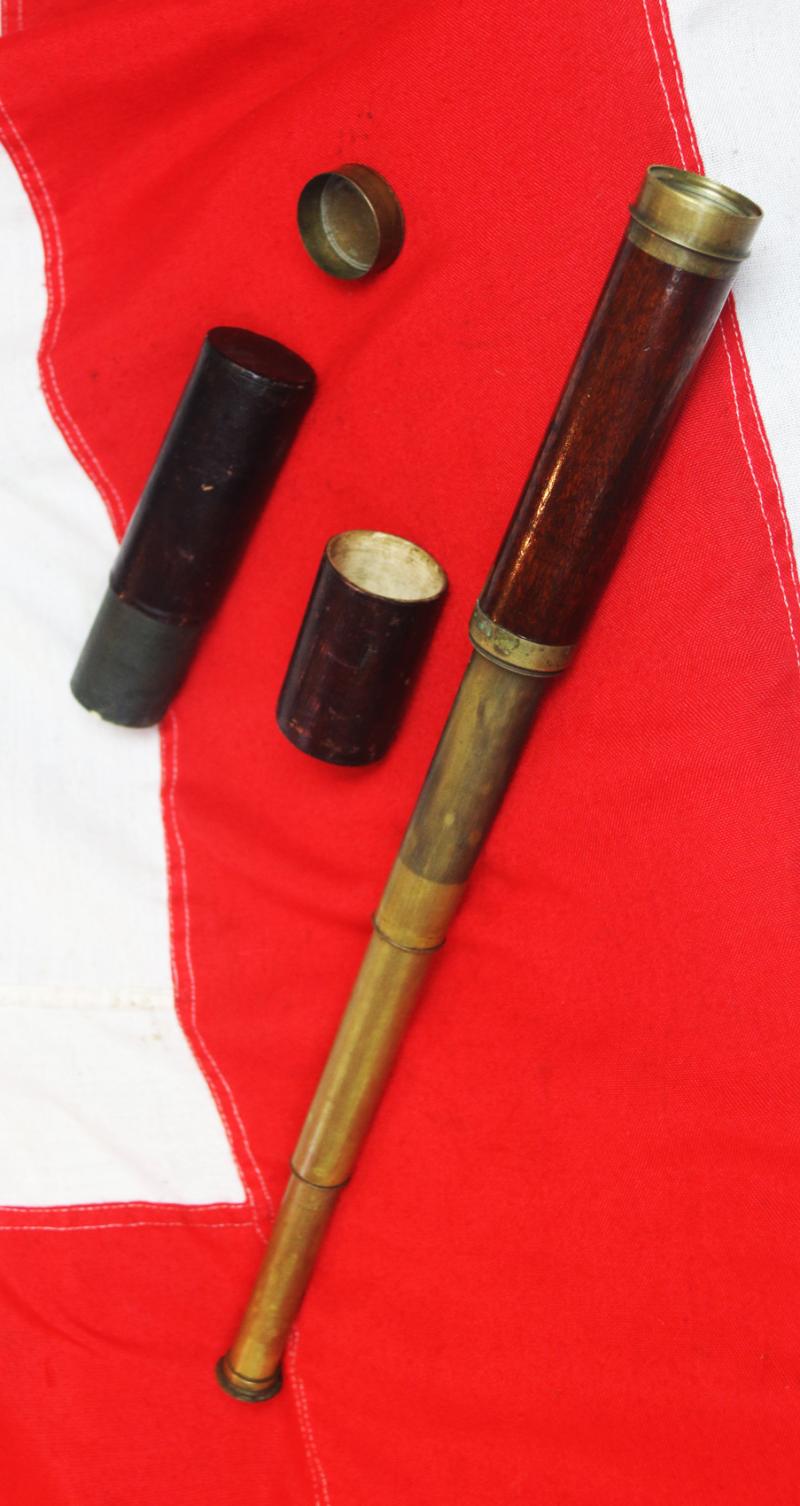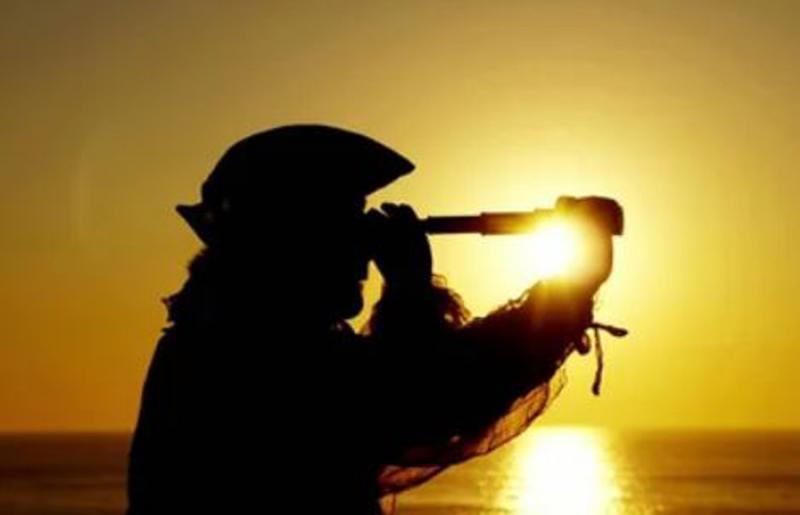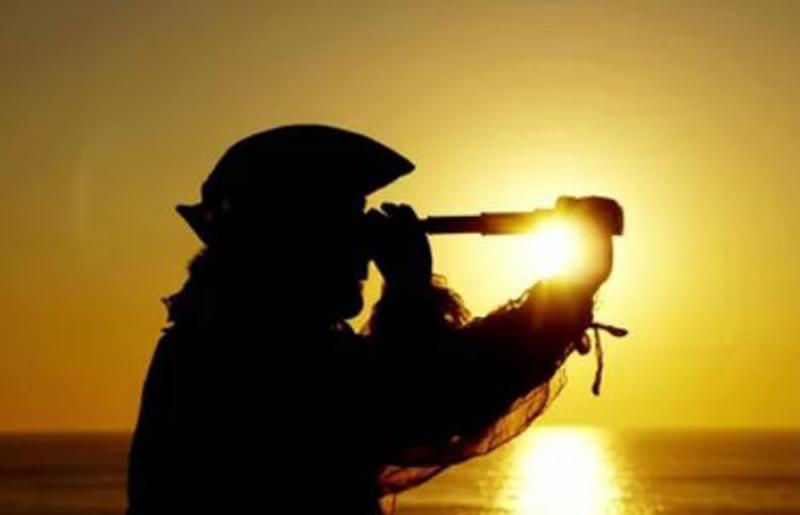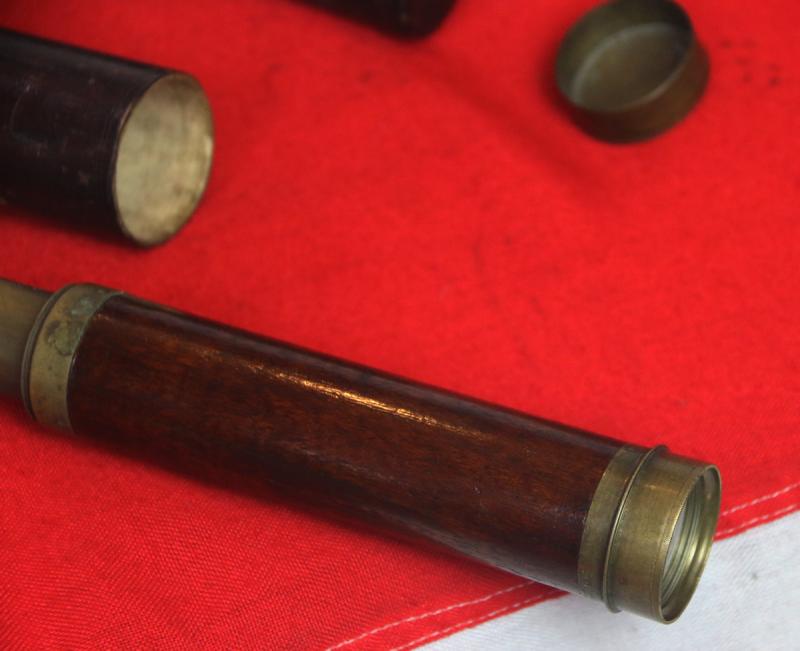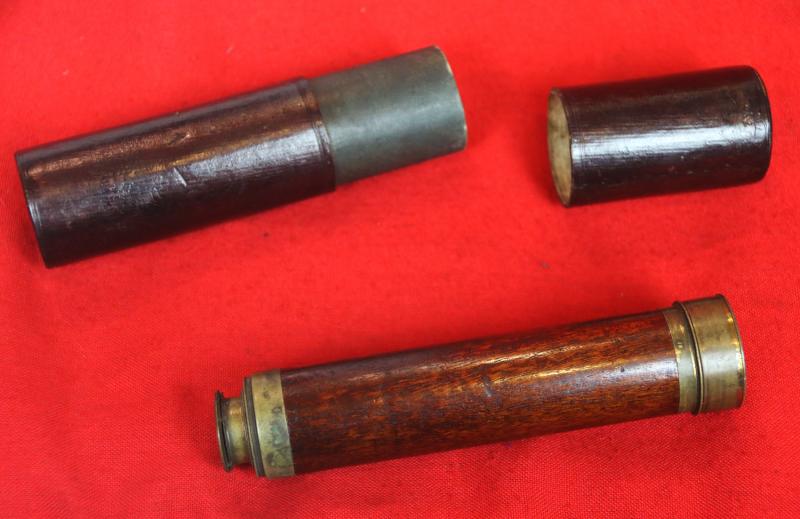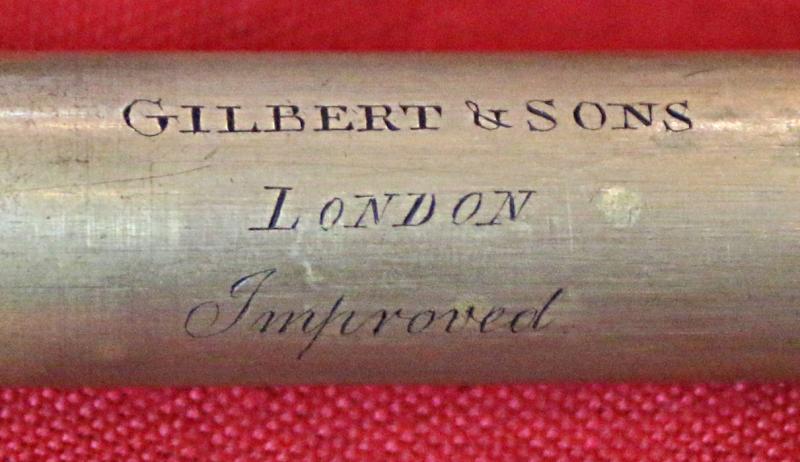An Original Napoleonic Wars Period King George IIIrd SpyGlass Telescope, In It's Original Tooled Leather Case. By Gilbert & Sons London
An antique three draw brass telescope signed, ‘Gilbert & Sons., London. Improved’.
William Gilbert and his sons worked out of London between 1794-1817. This telescope measures approximately 16.5 cms closed and 47 cms fully open.
Used for all purposes as would be required by a British officer either army or naval
The first spyglass was invented in 1608, the creator is not fully understood of whom it was, but the most mentioned person who gains credit is Jacob Metius from the Netherlands, who created the spyglass. A spyglass is a small hand held telescope that was used by Naval Officers and Captains of ships in the 16th, 17th, and 18th centuries. These were vital tools in these centuries, and were usually made out of brass. The spyglass was used for navigating the oceans and seas of the world, making it easier to see outward and also for identifying other ships, land and used to prepare for being attacked by pirates. The spyglass contributed to the creation of the telescope, as they are very similar. Thomas Harriot used one of these spyglass inventions of Metius to observe the moon, he then made a drawings at the time that depicted the specific details and features of the moon. Not long after this invention was made, and this picture was drawn, the famous Galileo began to explore the magnification of an image and created a telescope that was much more magnified then this original spyglass. There were many flaws in these telescopes and spyglasses regarding the factor of white light, type of glass, clarity and more.
The spyglass was not fully understood until the 1700’s to use different types of glass, shapes, and differencing of the lenses to produce a much more focused larger image; even to the current time today we have enhanced our ability to see at far distances using lenses.
A spyglass seems like a simple optical device, but its really not. A spyglass is actually more complex than it sounds when you figure out exactly how it works. At the beginning of the spyglass, an eyepiece is placed towards at the end you look into. The purpose of the eyepiece is to bring the image from the focus, and magnify it to the size of your eye’s pupil. At the focus of the lens, light rays are bent from the eyepiece perpendicular to each other, to the point where the cross. Where the beams cross is the focus. as the light beams continue to travel perpendicular to each other, they hit the outside of the objective lens, which is located at the opposite side you look into. Finally, The objective lens gathers light from the object or place in which you are looking at, and bends it into focus. This magnifies to a certain amount, based on the length and width of each lens.
It has a clear view and easily focus-able after a minimum distance of around 50 feet..
Photo in the gallery of the Duke of Wellington's telescope in the Royal Armouries Collection.
Signs of typical fair use and wear from the past 225 years or so.
More detailed photos to add tomorrow
Code: 25496
295.00 GBP

